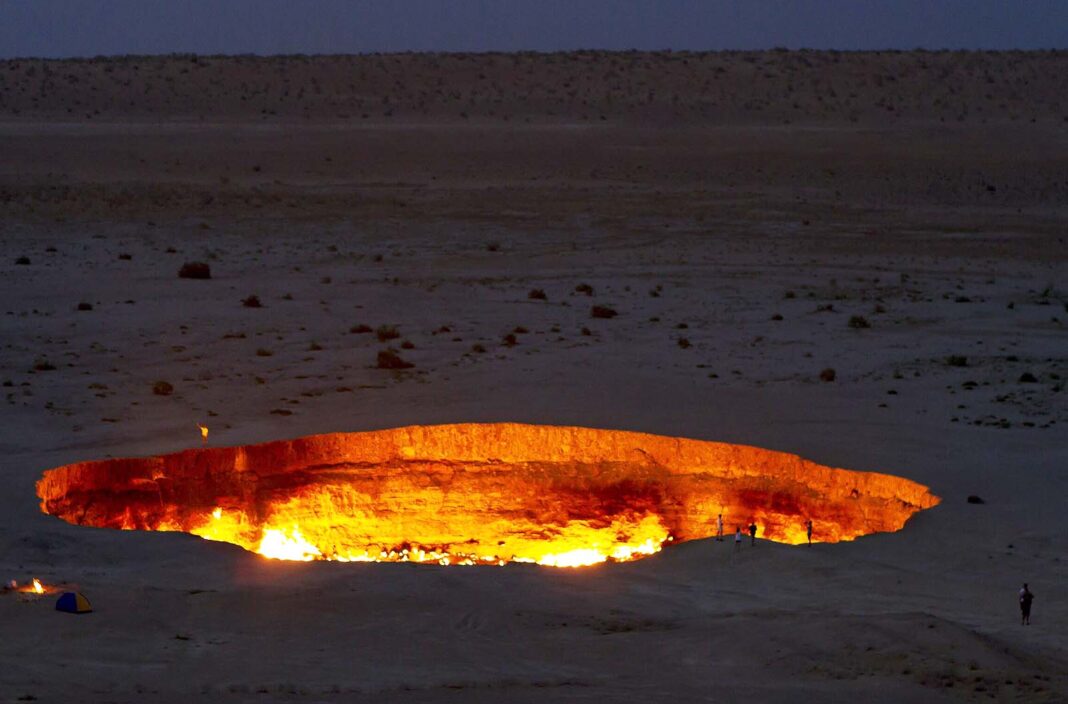The Darvaza Gas Crater in Turkmenistan is a rare example of an industrial accident transforming into a major tourist attraction.
In 1971 (possibly), a Soviet exploratory team searching for natural gas is believed to have triggered a chain reaction that led to the formation of this massive, fiery pit. Over time, it became the country’s most famous landmark, drawing visitors from around the world.
Often referred to as the “Gates of Hell” or the “Shining of Karakum,” the crater is fueled by methane gas escaping through vents in its floor and walls.
The result is a mesmerizing display of continuous flames, casting an eerie glow across the desert landscape. Standing at the rim, the heat is palpable, especially at night when the fire illuminates the darkness beneath a vast, starry sky.
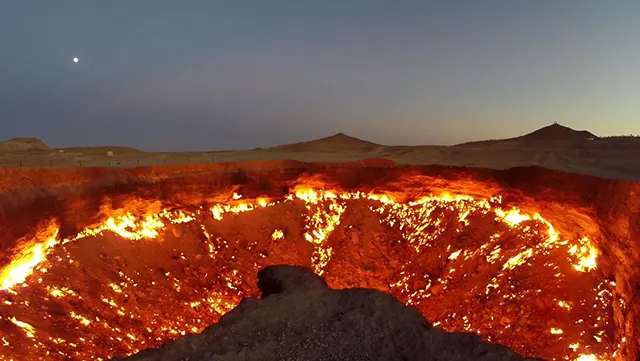 Situated in a remote stretch of the Karakum Desert, the crater has become a must-see destination on tours of Turkmenistan.
Situated in a remote stretch of the Karakum Desert, the crater has become a must-see destination on tours of Turkmenistan.
In its early years, visitors had to be entirely self-sufficient, bringing their own supplies for overnight stays.
Today, three permanent camps offer accommodation in yurts or tents, along with meals and motorized transport for those who prefer not to walk to the crater.
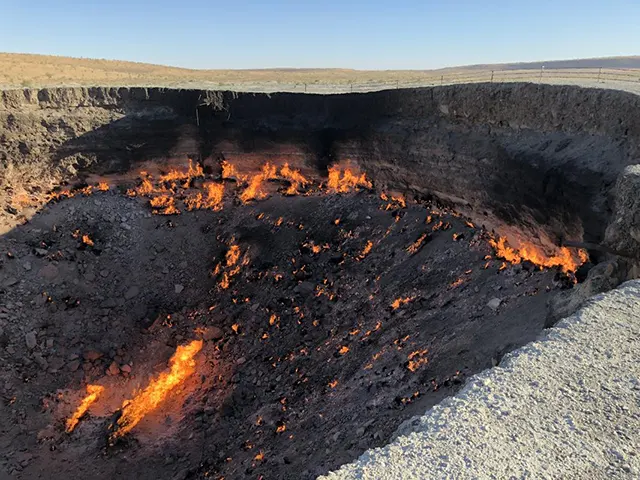 Measuring approximately 230 feet (70 meters) wide and 100 feet (30 meters) deep, the crater features sheer walls that plunge into a rocky debris field at the bottom.
Measuring approximately 230 feet (70 meters) wide and 100 feet (30 meters) deep, the crater features sheer walls that plunge into a rocky debris field at the bottom.
In 2018, a safety fence was installed to prevent visitors from getting too close to the scorching pit, ensuring a safer experience while still allowing for an unforgettable view of this otherworldly phenomenon.
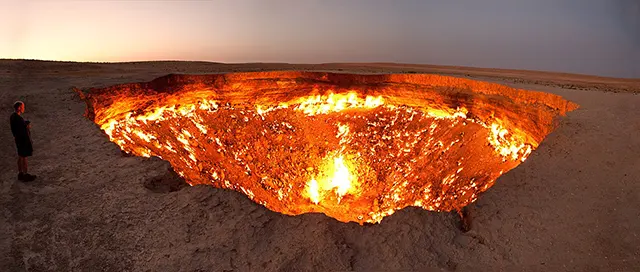
How Darvaza Gas Crater Was Created
The exact origins of the Darvaza Gas Crater remain uncertain, as official records are either missing, classified, or inaccessible.
Some local geologists suggest that the collapse of a natural gas cavern occurred in the 1960s and was only set ablaze in the 1980s to prevent the release of toxic gases.
Others believe the site was drilled by Soviet engineers in 1971 in search of oil. When the ground unexpectedly gave way, forming the crater, the engineers ignited the escaping gas in an attempt to burn it off, not realizing the supply was vast enough to keep the flames burning for decades.
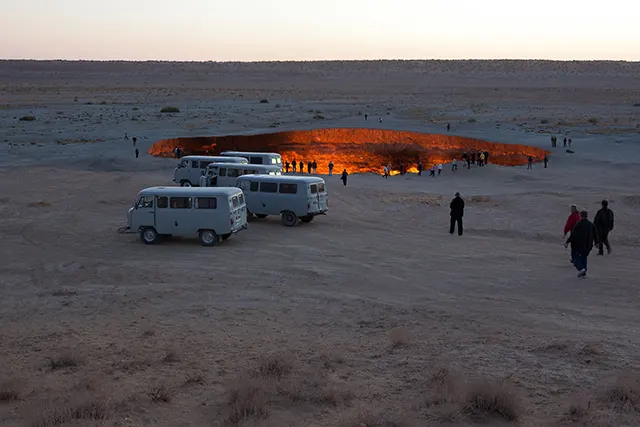 Located near the village of Darvaza in the heart of the Karakum Desert, the crater measures approximately 60 to 70 meters (200–230 feet) in diameter and plunges about 30 meters (98 feet) deep.
Located near the village of Darvaza in the heart of the Karakum Desert, the crater measures approximately 60 to 70 meters (200–230 feet) in diameter and plunges about 30 meters (98 feet) deep.
At night, its fiery glow is visible from miles away, creating an otherworldly sight against the barren landscape.
A second gas crater nearby, which emits a distinct odor, is fenced off and remains less accessible to visitors.
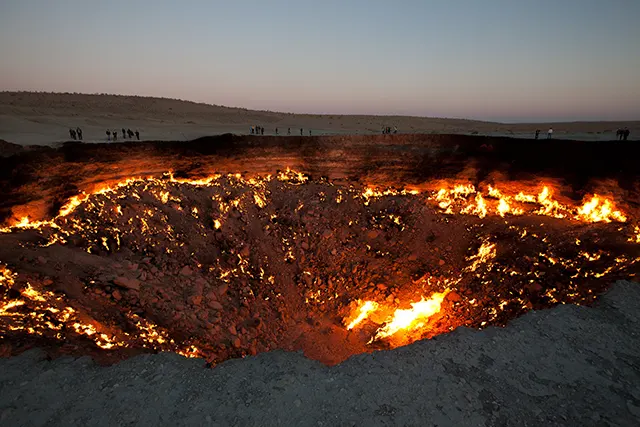 In April 2010, President Gurbanguly Berdimuhamedow called for measures to mitigate the crater’s impact on the development of nearby natural gas fields.
In April 2010, President Gurbanguly Berdimuhamedow called for measures to mitigate the crater’s impact on the development of nearby natural gas fields.
In January 2022, he announced plans to extinguish the flames, citing concerns over environmental damage, health risks, and economic drawbacks for the natural gas industry.
A commission was formed to determine the most effective method to put out the fire. However, despite these efforts, the crater continues to burn, remaining one of Turkmenistan’s most enigmatic landmarks.
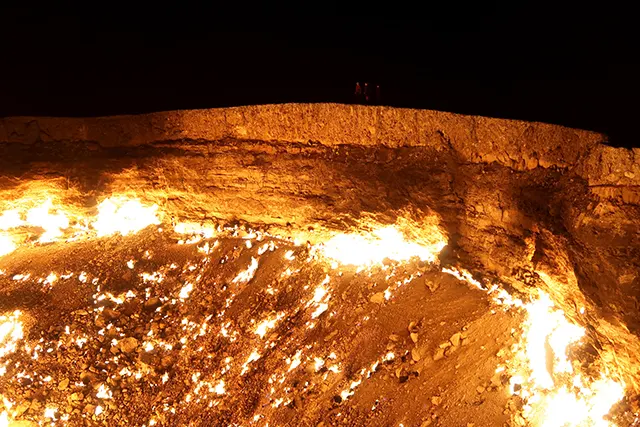 The Door To Hell as A Tourist Attraction
The Door To Hell as A Tourist Attraction
Since the dissolution of the Soviet Union, the Darvaza Gas Crater has evolved into one of Turkmenistan’s most well-known tourist attractions.
Its popularity may have been further bolstered by the region’s designation as a natural reserve in 2013.
A rough, unmarked road leads to the site, where visitors can find traditional yurts set up nearby. In 2018, the crater served as an overnight stop for the Amul-Hazar automobile rally.
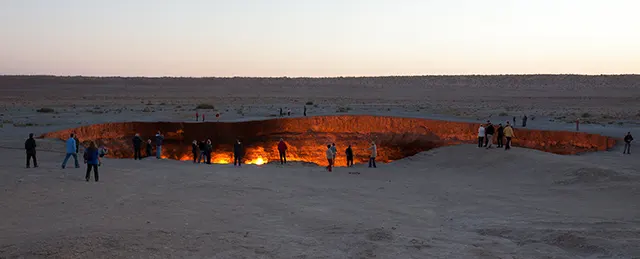 In 2013, explorer George Kourounis became the first person to reach the bottom of the Darvaza Gas Crater.
In 2013, explorer George Kourounis became the first person to reach the bottom of the Darvaza Gas Crater.
His mission, conducted as part of the Extreme Microbiome Project, involved collecting soil samples to study microorganisms capable of surviving in extreme conditions.
The descent was sponsored by National Geographic and later featured in an episode of the National Geographic Channel series Die Trying.
To withstand the intense heat and hazardous gases, Kourounis used a specially designed Kevlar harness, multiple Technora ropes, and a full-body aluminized suit equipped with a self-contained breathing apparatus.
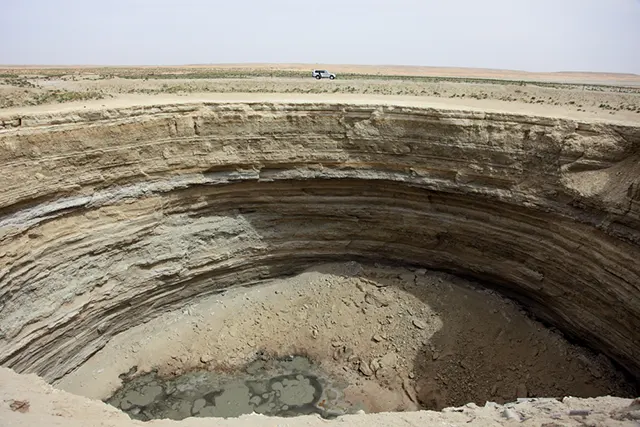
The mud crater. About 10 km from the Darvaza Gas Crater.
George Kourounis, Interview with National Geographic: I describe it as a coliseum of fire—just everywhere you look it’s thousands of these small fires.
The sound was like that of a jet engine, this roaring, high-pressure, gas-burning sound.
And there was no smoke. It burns very cleanly, so there’s nothing to obscure your view. You can just see every little lick of flame.

The Darvaza gas crater and the surroundings. Tents are visible, which facilitate nocturnal trips to the site.
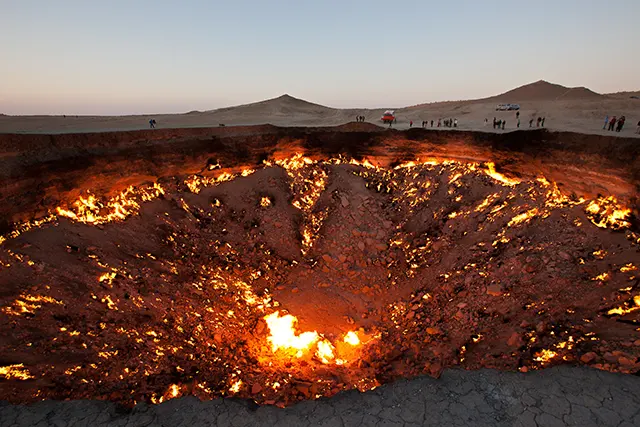
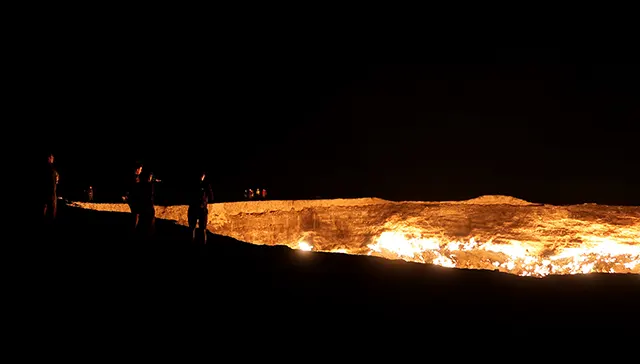
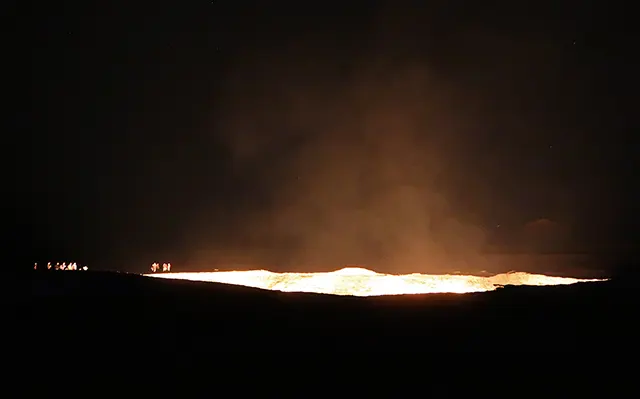
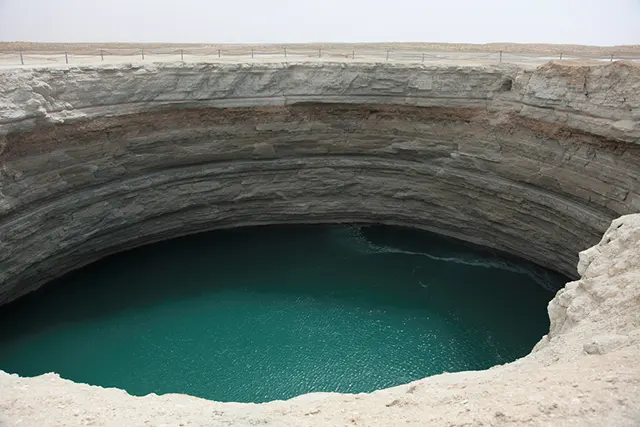
A crater filled with water; gas bubbles are visible. About 23 km from the Darvaza gas crater.
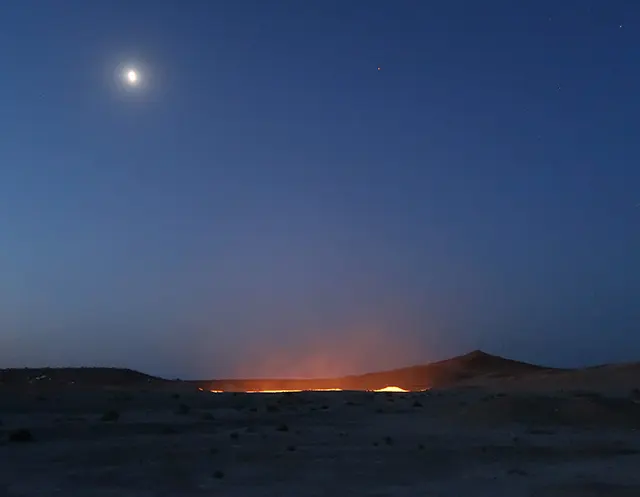
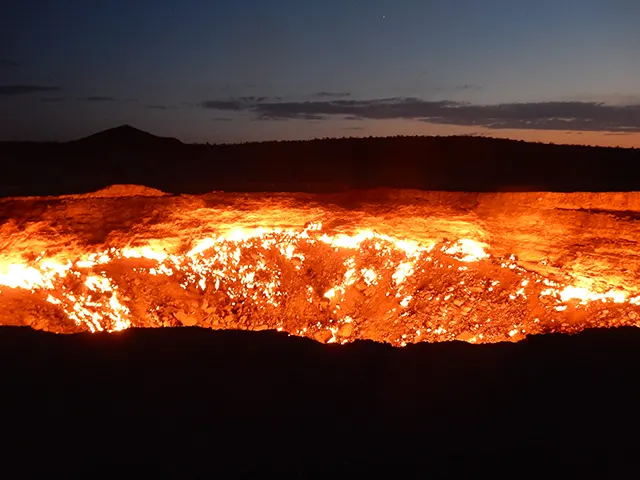
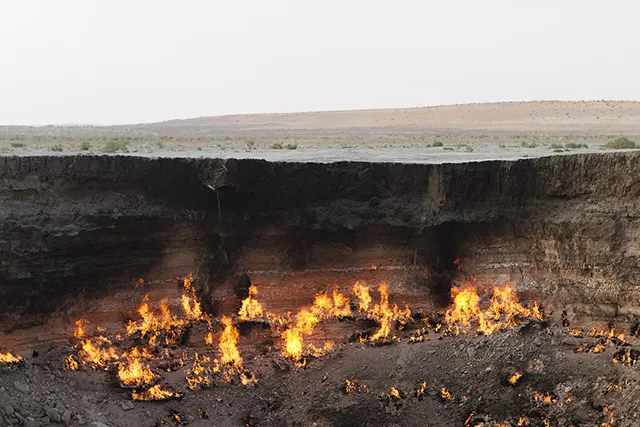
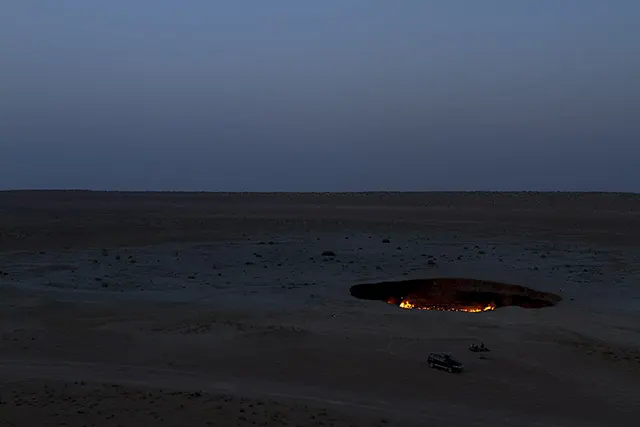
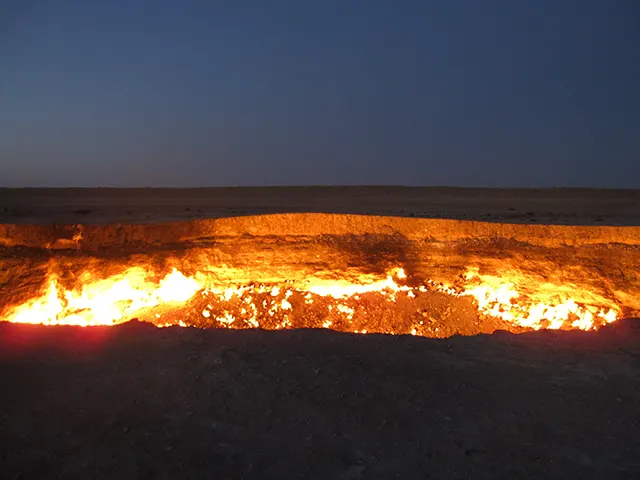
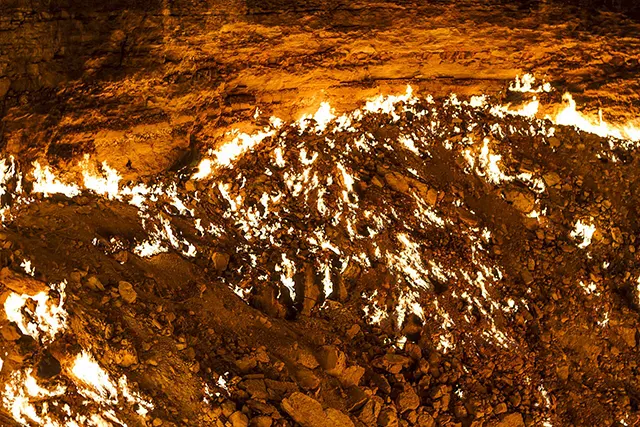
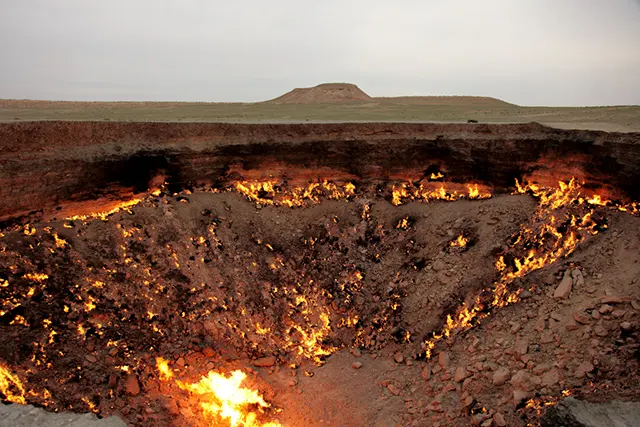
(Photo credit: RHP / Wikimedia Commons / Flickr).
